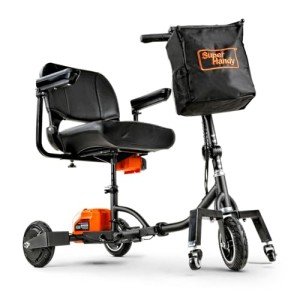Understanding Mobility Aids: Enhancing Independence and Quality of Life
As society continues to age and individuals increasingly seek methods to preserve self-reliance, the need for mobility aids has actually never been more important. Mobility aids, which incorporate a variety of devices designed to assist people with strolling or moving around, play a crucial role in promoting mobility, boosting security, and improving overall lifestyle. This post will explore the numerous kinds of mobility aids, their advantages, factors to consider for choice, and answer some frequently asked concerns.
Kinds Of Mobility Aids
Numerous mobility aids are available, each designed to attend to particular needs. The following table summarizes some of the most common types of mobility aids and their features.
| Type of Mobility Aid | Description | Best Suited For | Key Features |
|---|---|---|---|
| Canes | A portable stick offering assistance and balance. | People who need minimal assistance. | Light-weight, portable, adjustable height. |
| Walkers | Four-legged frames providing stability. | Those requiring substantial support while walking. | Foldable, some with wheels, included safety functions. |
| Rollators | Wheeled walkers with a seat for resting. | People requiring mobility with the alternative to rest. | Brakes, baskets for personal products, adjustable height. |
| Wheelchairs | Chairs with wheels for individuals with minimal mobility. | Those unable to walk or needing substantial support. | Manual or powered alternatives, adjustable seating. |
| Scooters | Motorized devices for larger ranges. | People with minimal endurance but needing independence. | Different sizes and styles, typically transportable. |
| Crutches | Support devices put under the arms or forearms. | People recuperating from lower limb injuries. | Adjustable, lightweight, needs upper body strength. |
| Stairlifts | Mechanical devices for moving between floorings. | Users facing difficulties in multi-level homes. | Personalized for various staircases, automated. |
Benefits of Mobility Aids
Mobility aids supply a variety of benefits that can considerably enhance the lives of individuals dealing with mobility difficulties. Some notable benefits include:
- Increased Independence: Mobility aids empower individuals to move easily without counting on others for help, thereby improving their confidence and self-esteem.
- Improved Safety: Using mobility aids can minimize the danger of falls and injuries, specifically for older adults or those with balance concerns.
- Enhanced Quality of Life: By facilitating mobility, people can engage in social activities, participate in occasions, and enjoy life more fully, adding to better psychological and psychological health.
- Rehab Support: After surgery or injury, mobility aids supply essential assistance and stability, assisting in healing and rehabilitation procedures.
- Availability: Many mobility aids are created to be used both indoors and outdoors, making sure that individuals can browse different environments with ease.
Elements to Consider When Choosing Mobility Aids
Selecting the appropriate mobility aid requires cautious consideration of numerous elements, consisting of:
| Factor | Factors to consider |
|---|---|
| User's Needs | Examine the level of mobility required; think about whether the user needs momentary or long-term help. |
| Physical Limitations | Evaluate the user's strength, balance, and coordination to determine the best kind of help. |
| Setting | Think about the primary environments where the aid will be used, such as home, outdoors, or specific terrains. |
| Weight and Portability | Make sure that the chosen gadget is manageable relating to transportability and storage, specifically for outdoor use. |
| Budget plan | Mobility aids can be found in a variety of costs; think about insurance protection and readily available financing choices. |
| Adjustability | Pick aids that can be adjusted for height and comfort to accommodate growth or changing needs. |
Often Asked Questions About Mobility Aids
1. How do I know if I require a mobility aid?
Numerous elements can signify the requirement for a mobility help, such as difficulty strolling or balancing, tiredness while standing, or a current surgery affecting mobility. Consulting with a healthcare specialist can offer guidance tailored to specific requirements.
2. What types of mobility aids are covered by insurance?
Protection varies between insurers, but many provide choices for durable medical equipment, which generally consists of wheelchairs, walkers, and some kinds of walking canes. Consult folding mobility scooters with remote key for particular protection details.
3. Can mobility aids be utilized outdoors?
Yes, lots of modern mobility aids are designed for outdoor use. Rollators, scooters, and some walkers are equipped with functions for stability and ease of usage on numerous surface.
4. How do I keep my mobility help?
Routine upkeep includes examining for any wear and tear, guaranteeing that parts such as wheels, brakes, and frames are functioning correctly, and cleaning up the devices as needed. Following the producer's standards is important for security.
5. Is there a risk of becoming based on mobility aids?
While some users might end up being reliant on mobility aids, they are created to promote independence and mobility. Slowly using a mobility help can improve self-confidence and aid maintain physical strength and coordination.
Mobility aids are indispensable tools that empower individuals to get rid of physical difficulties, promoting independence and boosting quality of life. By comprehending the different types of mobility aids readily available, their advantages, and important aspects for factor to consider, households and caregivers can make educated decisions that best satisfy the needs of their enjoyed ones. With the best assistance, those with mobility obstacles can lead satisfying and active lives, totally free to explore the world around them.

